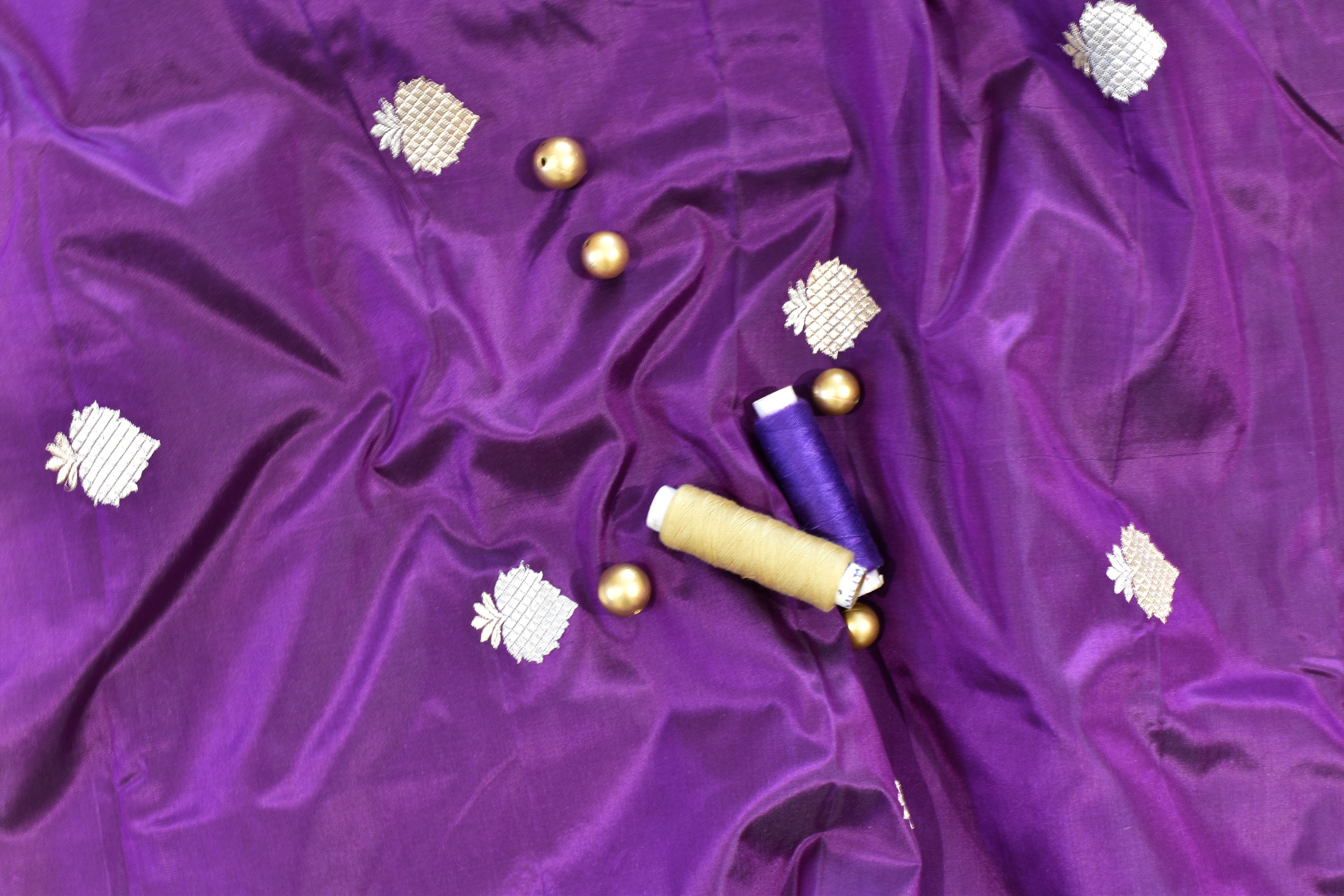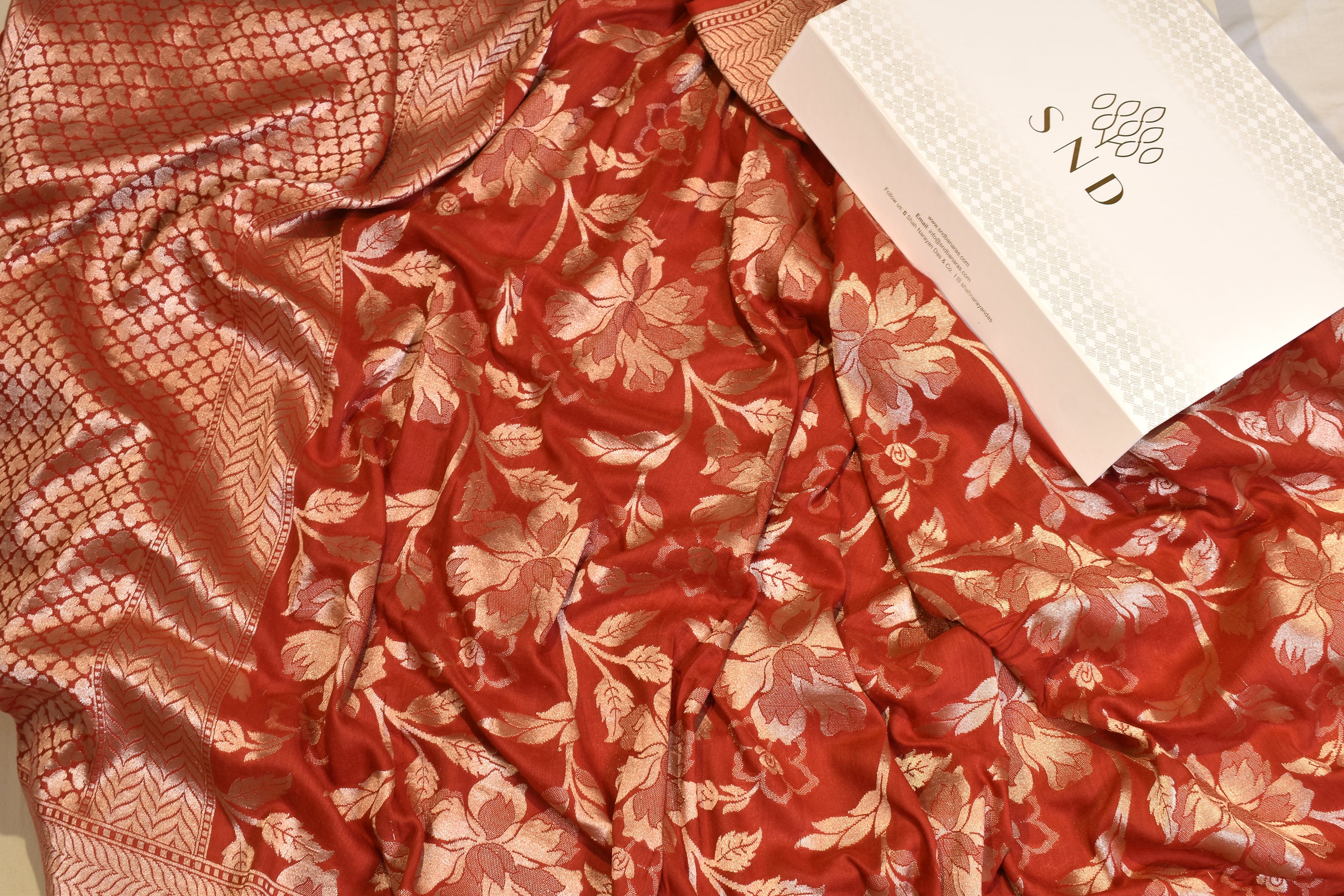Our Techniques
Weaving styles interlaced into every unique fabric

SND Varanasi
Phekwa
This weaving technique employed in our textile handlooms is carried out by a single craftsman and done in about 27 to 64 hours.
(It may perhaps be produced on power loom.)
Phekwa is carried out in a simple procedure where the weft is entrenched in the warp, interwoven from selvedge to selvedge, forming surface textures of the base. It is used in satin or silk with almost reversible textures known to be as ‘hunar’.
Similar to Cutwork, this weaving technique leaves behind a huge chunk of threads on the reverse side of the fabric. They are either cut off or left over after the entire fabric has been handwoven.
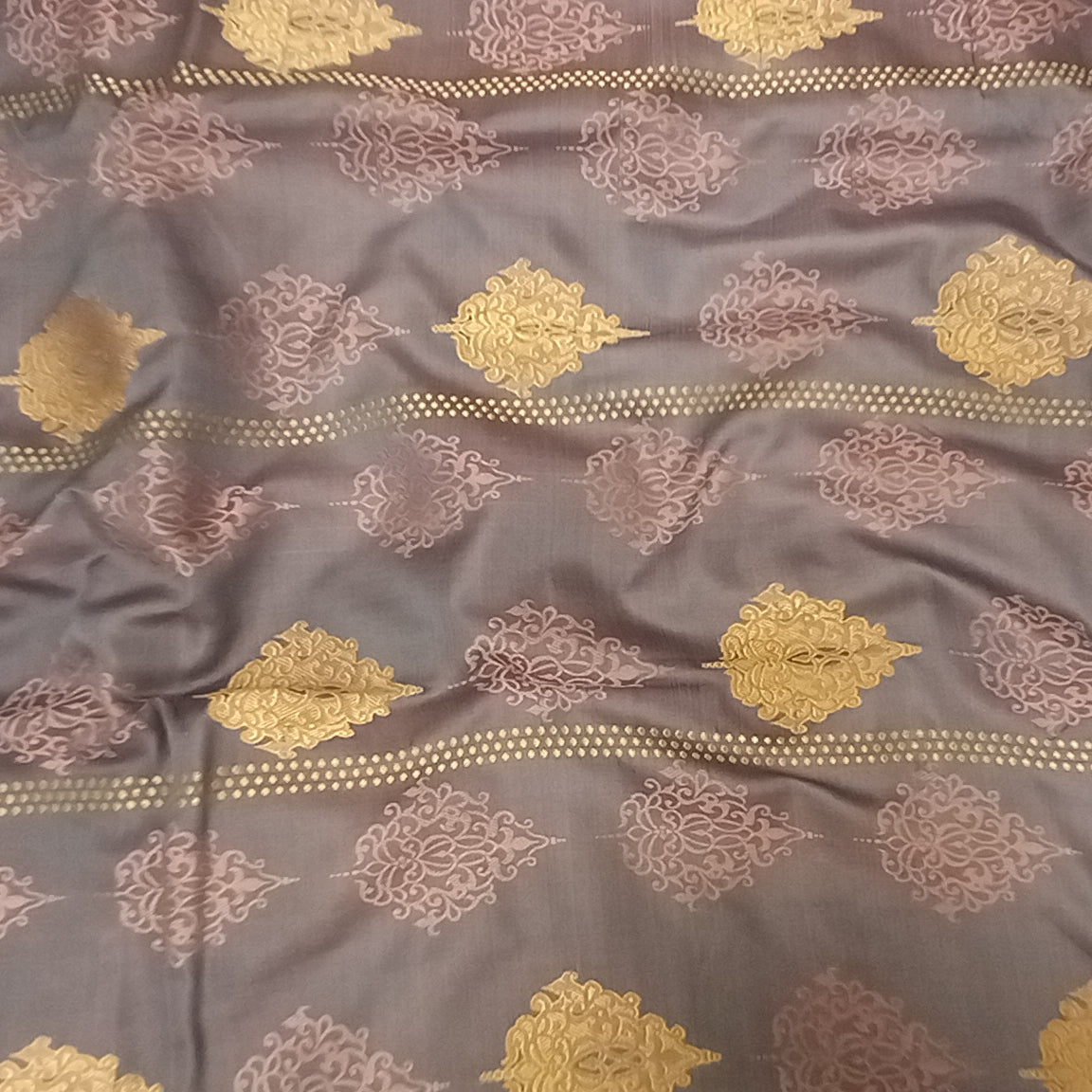
SND Varanasi
Tanchoi
It is a weaving technique that generally involves a single or a double warp and around two to five colors which are most probably of the same shade.
It produces a self-design with intricate finesse that covers the fabric and ensures that there is no float on the back to keep it neat.
Tanchoi is known for its elaborate and small handwoven patterns all over the fabric. An artist takes around 80 hours to bring this technique to life with fine craftsmanship.
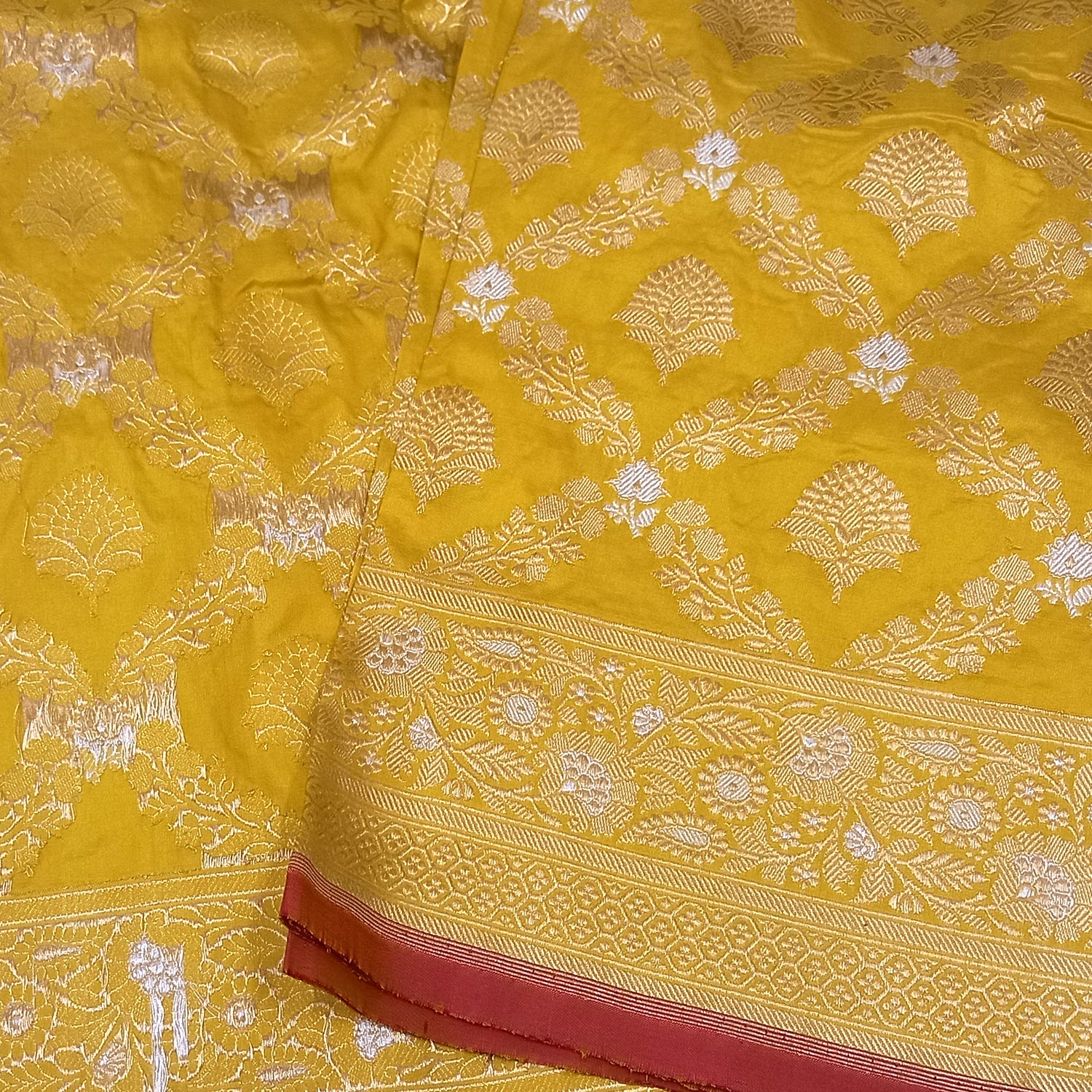
SND VARANASI
Kadwa
The process is familiarly known as ‘Kadhua’. It takes longer to be done on the loom. But once it is completed, the pattern embodies a robust structure that articulates into a ‘kadha-hua’ appearance which stands out on the fabric.
Banaras is famous for kadwa weaving patterns. It is an elaborate process that is employed to inscribe motifs in a synchronized pattern with uneven brocading. The motifs are handwoven one by one, unlike other handloom textiles. The weaver individually places in the extra weft for each motif, after which it is manually turned in.
No finishing is required when this technique is employed because there are no loose threads left over on the reverse side of the fabric. Motifs of all kinds of sizes, diverse textures, various colors can be woven on the same fabric, which is otherwise difficult using any other techniques.
An average kadwa style saree requires 192 to 486 weaving hours to be skilfully handwoven by two proficient craftsmen.
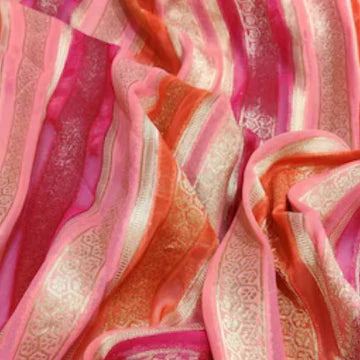
SND VARANASI
Rangkat
An age-old Banarasi weaving technique that demands highly skilled craftsmanship. The technique of Rangkat involves a crossover of yarns with color blocking in diverse geometrical patterns.
It is known for its intricate weaving style, floral and geometric adornment and skilled craftsmanship. Rangkat is a treasured hand-loom weave that is preserved and practiced with precision.
It takes around 480 to 960 weaving hours to endure this technique by two proficient artists.

SND VARANASI
Jamdani
The origin of Jamdani weave can be traced back to Awadh, Bangladesh. It is one of the most labour-intensive weaving techniques. The patterns are created using heavier threads on a translucent backdrop of the fabric.
This weaving technique is accomplished in 960 to 1920 weaving hours and carried out by two skilled artists. Jamdani weave is known for its exquisite appeal and excellent quality.
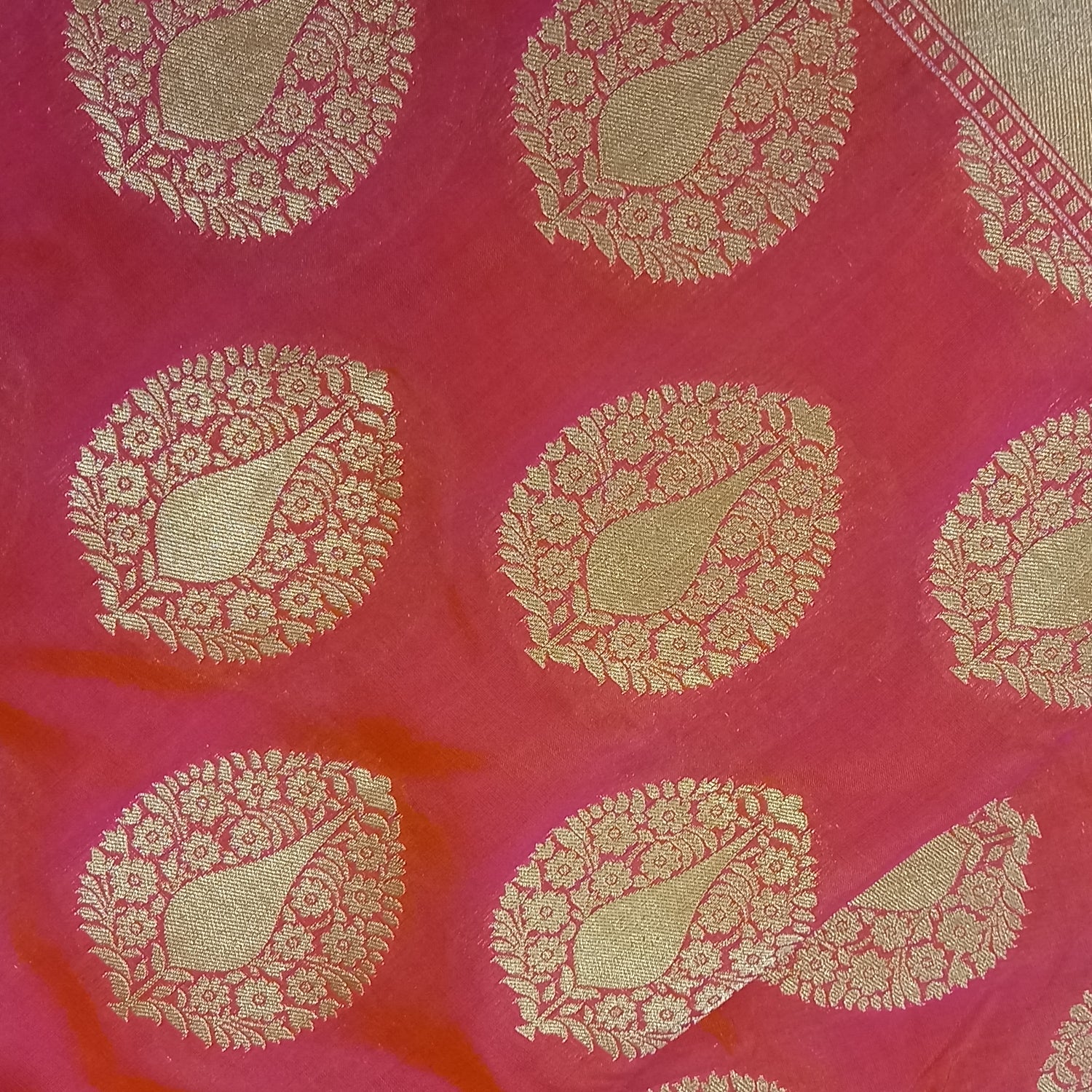
SND Varanasi
Uppada
It is known to be as one of the most advanced styles of weaving. Each design is first carved onto a graph paper as a blueprint. It is then placed in the warp to hand-weave the patterns on the silk fabric. The textile is adorned with pure gold and silver zari lace that decorates the fabric.
This weaving technique was completed in 960 to 1920 weaving hours and carried out by two fine craftsmen.


